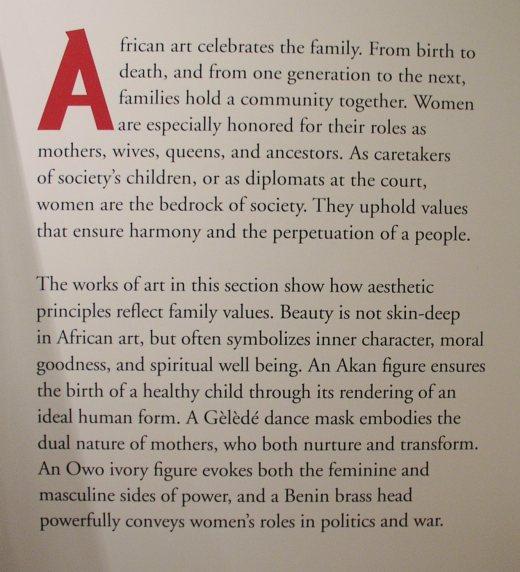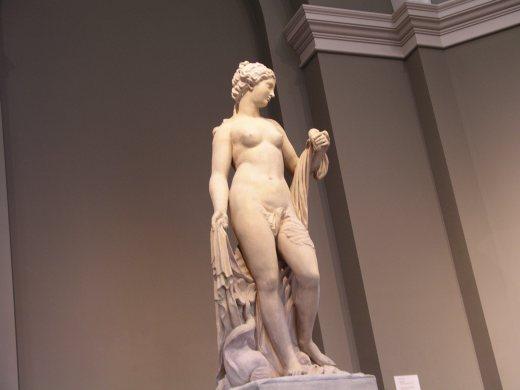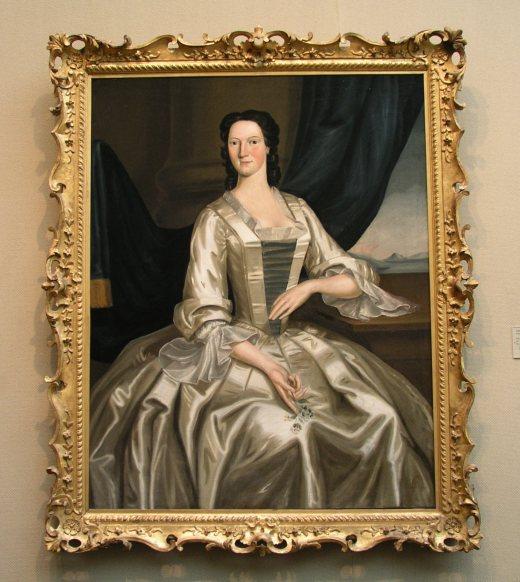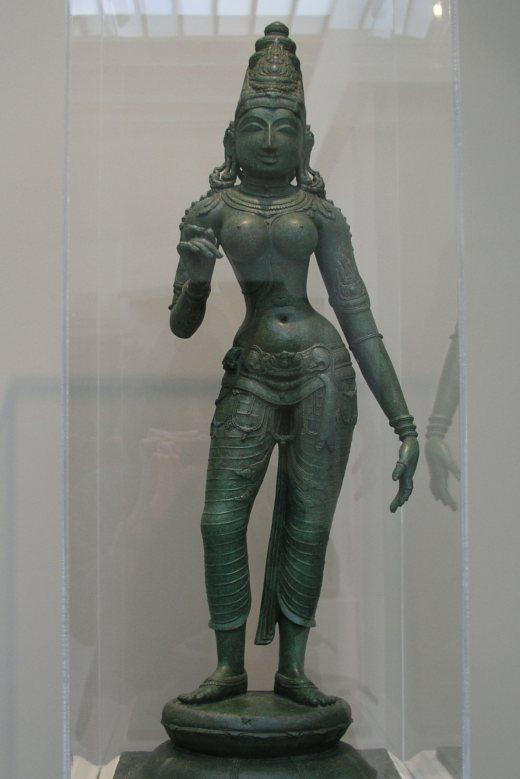(Hmm. In moments of even more weirdness, I have to post pictures that led to this tomorrow. Am I doing this to keep you curious and coming back for more? No such thing. Somehow, I feel I am being kind to low bandwidth people by not piling too many images per post. (Not like it matters, considering the posts pile up for a bit before they leave the front page. But that’s the most legit reason I could come up with. Deal with it.) Moving your mouse over the images should popup a little one liner.)
So here I am, figuring out what it is I am doing at a museum. I mean, I’ve been to many before, but for some reason I have to find purpose, and patterns. So I begin to look around.
Within a bit, I found this:

Apparently, they were smart and got it. All the (female form related?) art in that exhibit mirrored the words used in this description.
Moving along, I found art from the renaissance period. Now admittedly, most of this stuff wasn’t “positive” (in a yay, our world is so peachy way), but it was easily the most realistic in its depiction of things. Obviously, this was with respect to everything, but I am going to stick to the topic of the day. So, through their eyes:

Achievable dimension proportions?
Now I wasn’t kidding when I said they were realistic. I am being mean, but apparently the richest and vainest nobles weren’t the most attractive.

Or spent so much on cosmetics, they couldn’t afford the best painters.
Kidding. What I am getting at is this set called it as they saw it. Not some obscure what they wished it to be.
Now as we start moving towards the Asian section of the exhibit, particularly (Cambodian?) areas influenced by Indian art, things start looking a little different. To put things in perspective, these are like toned down, “realifieder” versions of the Indian art counterparts. (Like the sculptor’s wife hit him on the head with a club until he changed things.)

And for my final exhibit, here is a female form sample from ancient Indian art.

The article below this sculpture was raving about how her proportions are so well defined, right down to the diameter of her ankle and the lengths of her toes. What it didn’t talk about is how much freaking plastic surgery one needs to go through to get to this point.
So there you have it. There were always those that got it, and those that didn’t.
Do you?
Apparently, unrealistic expectations isn’t some new fad plaguing just today’s society.
Of course, there were tons of other such patterns related to kind of materials used, or the level of detail, and other things I’d love to go into. But who really wants to know such things? And this entry just seems incomplete without a plug to this person’s page where she posts snippets related to gender and technology.
You shouldn’t be hooded in a museum. Not honorable.
Or is that just hair ?!?!
And yes, I should allowed to post only once in 30 secs. Thanks.
The dome on the top of my head is the hood. The general fuzziness/darkness on the sides of my neck and over my shoulders is hair.
Sure, I could follow good museum etiquette if I weren’t living in places that attempt to mimic the north pole. But since I am, rules don’t apply.
Techy geeks dont fancy the purple highlighting?
My multi-hued lantern you. Love the light.Ty.
Of course, us multi-hued lanterns look prettier when turned on. :)
indian gods
for more details log on to:www.google.com
search under INDIAN CULTURE
and see what you get????????
(go to the second one)